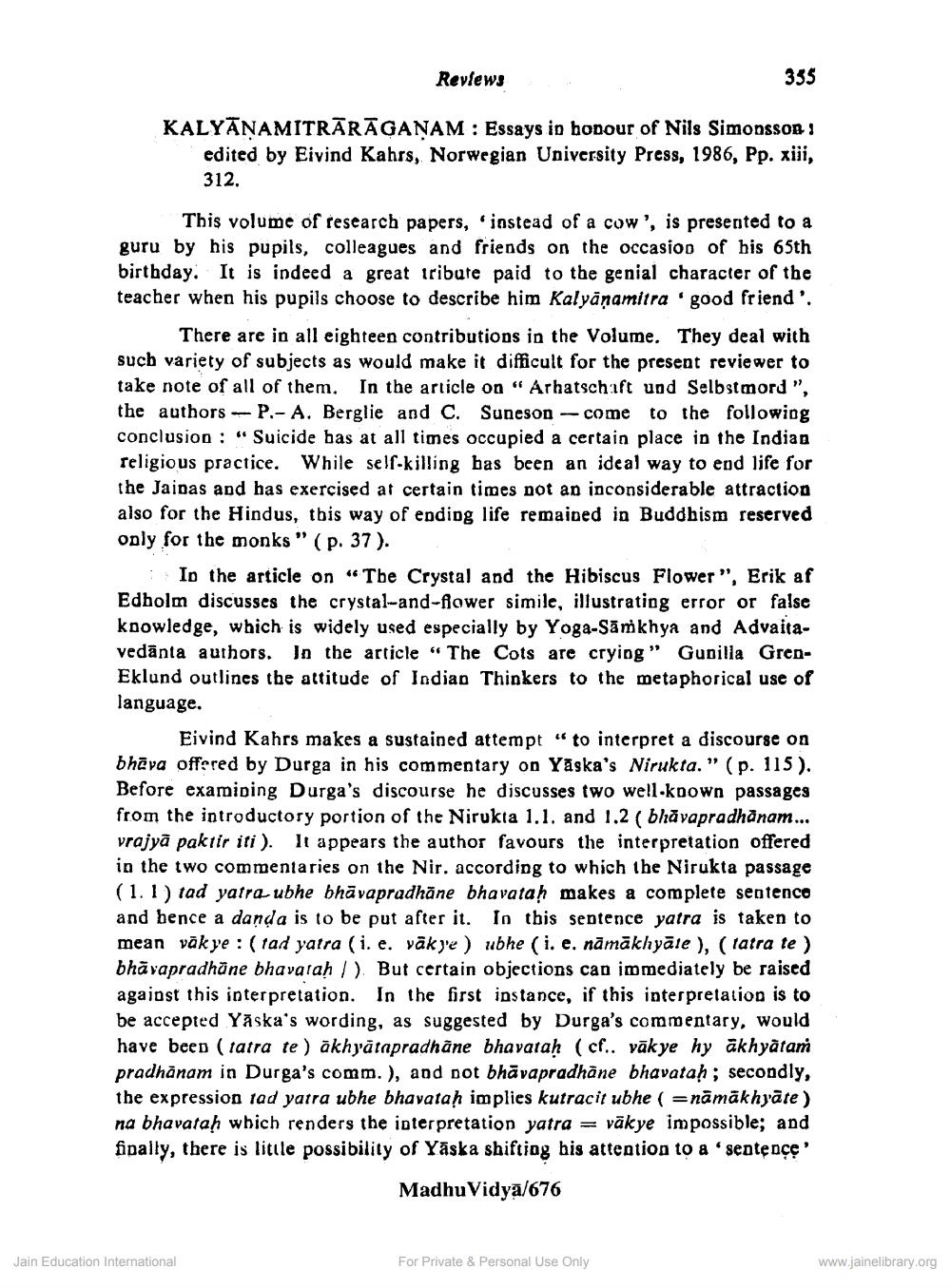________________
Reviews
KALYAṆAMITRĀRĀGAṆAM: Essays in honour of Nils Simonsson! edited by Eivind Kahrs, Norwegian University Press, 1986, Pp. xiii, 312.
355
This volume of research papers, instead of a cow', is presented to a guru by his pupils, colleagues and friends on the occasion of his 65th birthday. It is indeed a great tribute paid to the genial character of the teacher when his pupils choose to describe him Kalyanamitra good friend'.
There are in all eighteen contributions in the Volume. They deal with such variety of subjects as would make it difficult for the present reviewer to take note of all of them. In the article on "Arhatschaft und Selbstmord ", the authors P.- A. Berglie and C. Suneson-come to the following conclusion: "Suicide has at all times occupied a certain place in the Indian religious practice. While self-killing has been an ideal way to end life for the Jainas and has exercised at certain times not an inconsiderable attraction also for the Hindus, this way of ending life remained in Buddhism reserved only for the monks" (p. 37).
In the article on "The Crystal and the Hibiscus Flower", Erik af Edholm discusses the crystal-and-flower simile, illustrating error or false. knowledge, which is widely used especially by Yoga-Sämkhya and Advaitavedänta authors. In the article "The Cots are crying" Gunilla GrenEklund outlines the attitude of Indian Thinkers to the metaphorical use of language.
Jain Education International
Eivind Kahrs makes a sustained attempt to interpret a discourse on bhava offered by Durga in his commentary on Yaska's Nirukta." (p. 115). Before examining Durga's discourse he discusses two well-known passages from the introductory portion of the Nirukta 1.1. and 1.2 (bhavapradhanam... vrajya paktir iti). It appears the author favours the interpretation offered in the two commentaries on the Nir. according to which the Nirukta passage (1.1) tad yatra-ubhe bhavapradhäne bhavataḥ makes a complete sentence and hence a danda is to be put after it. In this sentence yatra is taken to mean väkye: (tad yatra (i. e. vākye) ubhe (i. e. nāmākhyāte), (tatra te) bhavapradhane bhavataḥ ). But certain objections can immediately be raised against this interpretation. In the first instance, if this interpretation is to be accepted Yaska's wording, as suggested by Durga's commentary, would have been (tatra te) akhyātapradhane bhavataḥ (cf.. vakye hy ākhyātam pradhanam in Durga's comm. ), and not bhavapradhāne bhavataḥ; secondly, the expression tad yatra ubhe bhavatah implies kutracit ubhe (=nāmākhyāte) na bhavataḥ which renders the interpretation yatra vākye impossible; and finally, there is little possibility of Yäska shifting his attention to a sentence'
Madhu Vidya/676
For Private & Personal Use Only
www.jainelibrary.org




